Does My Baby Have Thrush? (Thrush Vs Milky Tongue)
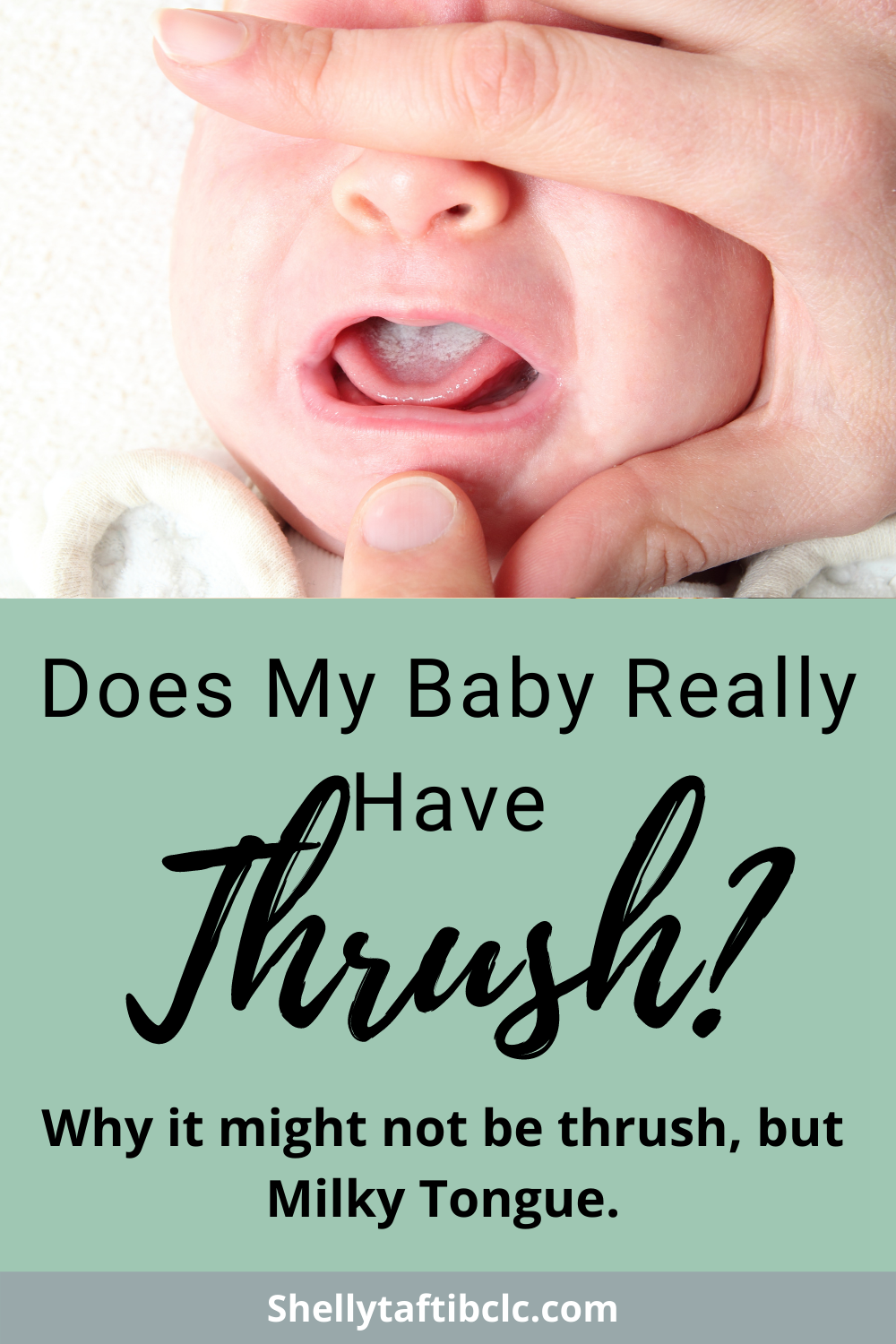
Often times parents get concerned when they see a white coating on their baby’s tongue.
Usually their first concern is thrush. And many times, the pediatrician will diagnoses a baby with white coating on their tongue with thrush.
But, is it really thrush?
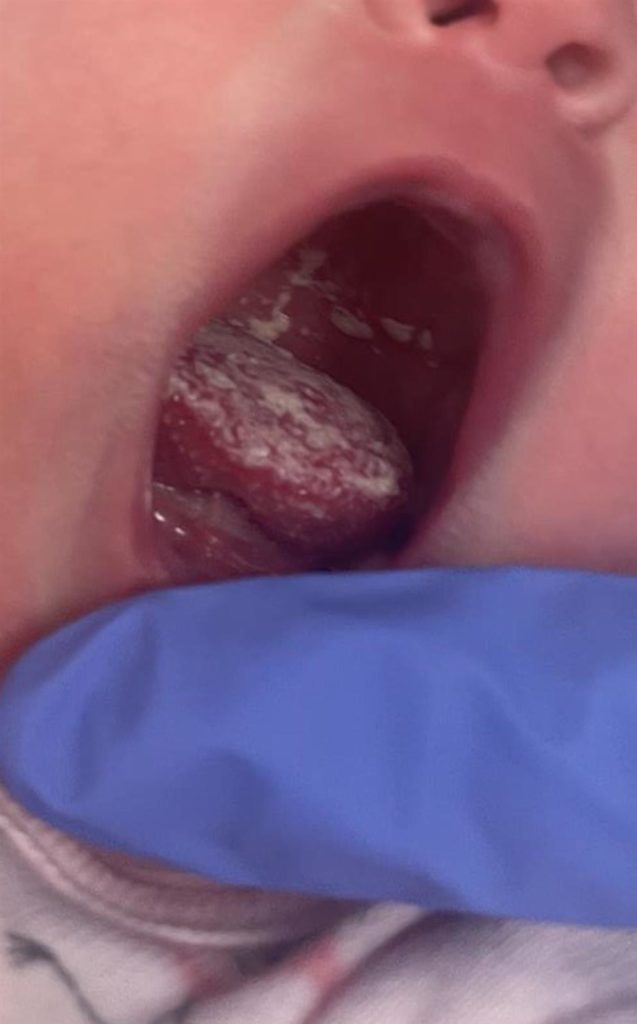
What Is Thrush?
Thrush is a buildup of Candida albicans in the baby’s mouth. Yup, that’s right. Basically it’s a yeast infection in your baby’s mouth (and many times in your nipple as well).
You and your baby have an increased risk of thrush if:
- the breastfeeding/chestfeeding parent has a yeast infection
- the breastfeeding/chestfeeding parent was on antibiotics during pregnancy, labor, after birth, or any time near where the symptoms of thrush start to develop
- if the baby is on antibiotics
- if the breastfeeding parent is anemic or diabetic
- if there are nipple cracks or damage present
Symptoms of thrush can vary widely between parents and babies, but the most common symptoms are:
- severe nipple pain – many times parents describe the pain as a burning, shooting pain that they feel during and in between feedings. The pain does not improve with good latching and positioning techniques.
- itchy, burning nipples that appear shiny, red, and/or flaky
- for the baby – creamy white patches on the tongue, roof of mouth, inside of cheeks or lips
- for the baby – persistent diaper rash that doesn’t improve and may even bleed or develop a white coating
Treatment for thrush usually starts with oral nystatin for baby, and nystatin cream for the parent’s nipples. Parents are also encouraged to change breast pads and bras frequently and to sanitize (or wash in really hot water) anything that comes into contact with their nipples or baby’s mouth.
This is very important – if you or your baby is diagnosed with thrush, BOTH you and your baby need to be treated, even if one of you is not showing any symptoms. Many times pediatricians will tell parents that because they are not showing symptoms, only the baby needs to be treated.
You can carry thrush without having any symptoms! So, if you do have thrush and you are not treated and only your baby is, you can end up just passing it back and forth between each other. Not fun!
Does Your Baby Really Have Thrush?
One of the important reasons why it is so important to work with an IBCLC if you or your doctor suspect your baby has thrush is because often times, it’s not actually thrush! In fact, in my practice, most of the time when a parent tells me their baby was diagnosed with thrush, it actually ends up being Milky Tongue.
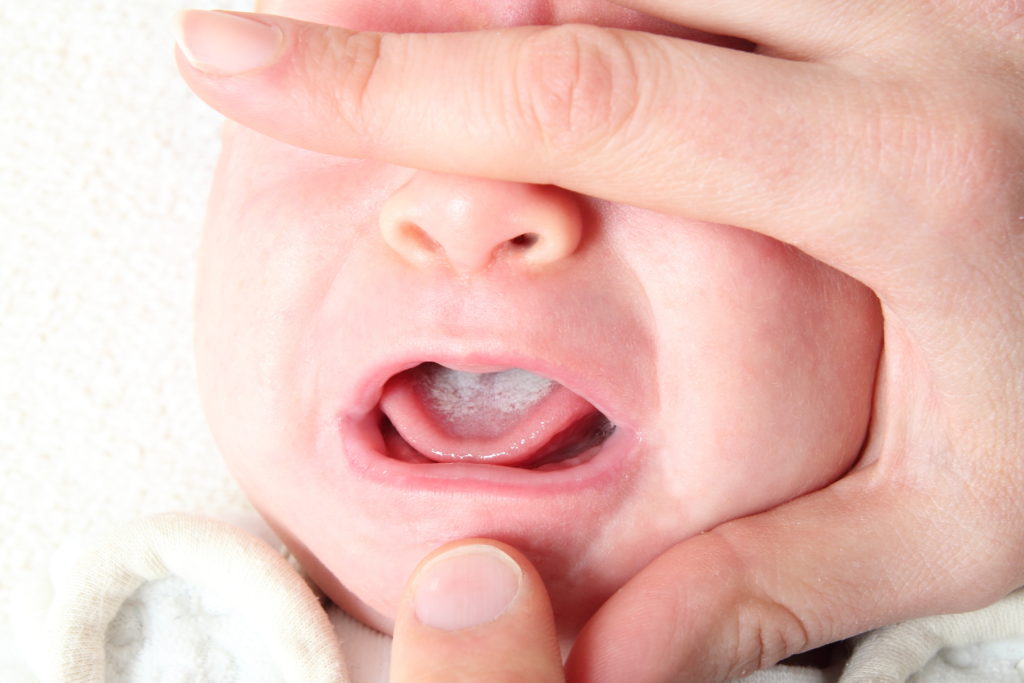
What is Milky Tongue?
Milky tongue is the term used to describe when a baby has a build up of milk, debris, and dead cells on their tongue.
Let’s talk about why this happens in some babies and not in others.
Our tongues are covered with little structures called papillae that almost look like tiny hairs.
Now, when your baby has their mouth closed, their tongue should stay up against the roof of their mouth, or their palate. This contact with the palate actually allows the palate to clean any milk or debris that was trapped in the papillae from the previous feeding.
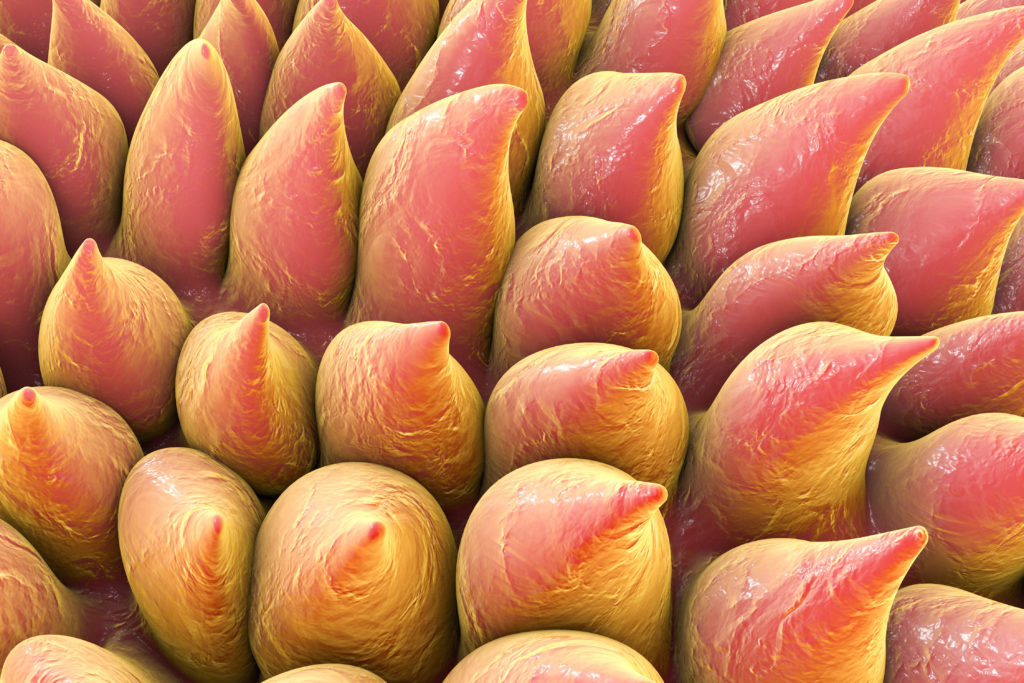
In some situations, a baby is not able to hold their tongue up against the palate in between feedings. It might be because they have a high palate; or that they keep their mouth open instead of closed; or because their tongue can’t come up high enough to touch the palate due to structural issues like a tongue tie.
Because the palate isn’t able to clean the tongue, the baby’s tongue starts to develop a coating of milk. And it is this coating of milk that makes parents and pediatricians believe the baby has tongue tie, when they actually don’t!
Because babies who aren’t elevating their tongue enough or who have high palates (or both) will often chomp on the nipple when feeding, the parent often times has nipple pain too, furthering the belief that there is thrush present.
Let’s Look At The Difference…
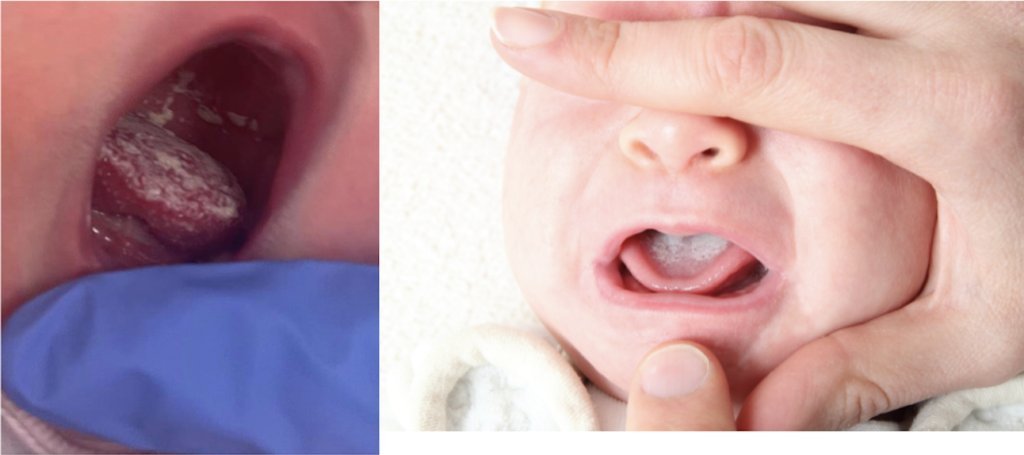
On the left, we see a case of thrush in a baby’s mouth. Notice how the white patches are not only on the tongue, but the roof of the mouth as well. The white coating is very, very patchy and uneven.
On the right, you can see that this baby has milky tongue. The baby is crying, however the tongue is staying down – which probably indicates this baby has trouble bringing their tongue up high enough to touch the palate. The white coating is less patchy and more uniform, and is only present on the tongue.
Okay Great…Now What?
So what does this mean for you?
If you notice a white coating on your baby’s tongue, and your nipples are in pain from breastfeeding, don’t assume it’s thrush!
The best way to rule out whether it is thrush or not and to feed more comfortably in general is to work with an IBCLC to get support with latching and to rule out issues such as tongue tie, high palate, etc.
Did your baby have milky tongue or thrush? Share your story below!
